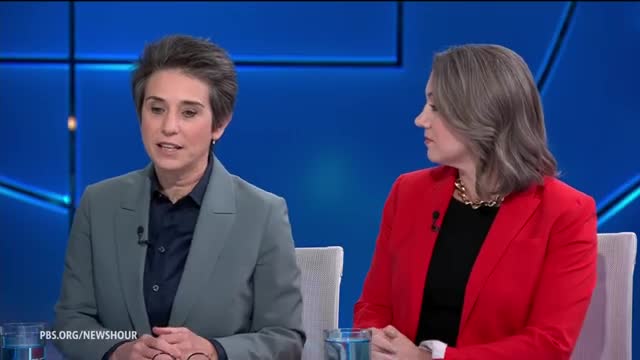Election night predictions hinge on key battleground states
This article was created by AI summarizing key points discussed. AI makes mistakes, so for full details and context, please refer to the video of the full meeting. Please report any errors so we can fix them. Report an error »

In a recent government meeting, discussions centered on the upcoming election and the pivotal issues influencing undecided voters. Analysts highlighted that many voters perceive the election as a choice between risks associated with the candidates, particularly regarding control and freedom, with abortion rights emerging as a significant concern.
The conversation noted that polling data indicates a stagnant race, with candidates remaining closely matched at 50-50 for several months. Notably, former President Trump is polling at 47%, mirroring his standings from previous elections in 2016 and 2020, which raises questions about voter sentiment amidst ongoing national challenges.
Key battleground states such as North Carolina and Georgia are expected to provide early returns, which could significantly impact the trajectory of the race. If Trump secures victories in these states, attention will shift to the traditionally Democratic-leaning \"blue wall.\" Conversely, a loss could indicate a more challenging path for his campaign.
The meeting also addressed the importance of congressional races in these battlegrounds, which may offer insights into the presidential race and potential shifts in House control. However, due to the timing of ballot counting, particularly in states like California, definitive results may not be available until later in the week.
As the meeting concluded, participants expressed uncertainty about predicting the election outcome or the timeline for results, emphasizing the unpredictability of the electoral process. The anticipation for live election night coverage was palpable, as stakeholders prepare for a critical moment in the political landscape.
The conversation noted that polling data indicates a stagnant race, with candidates remaining closely matched at 50-50 for several months. Notably, former President Trump is polling at 47%, mirroring his standings from previous elections in 2016 and 2020, which raises questions about voter sentiment amidst ongoing national challenges.
Key battleground states such as North Carolina and Georgia are expected to provide early returns, which could significantly impact the trajectory of the race. If Trump secures victories in these states, attention will shift to the traditionally Democratic-leaning \"blue wall.\" Conversely, a loss could indicate a more challenging path for his campaign.
The meeting also addressed the importance of congressional races in these battlegrounds, which may offer insights into the presidential race and potential shifts in House control. However, due to the timing of ballot counting, particularly in states like California, definitive results may not be available until later in the week.
As the meeting concluded, participants expressed uncertainty about predicting the election outcome or the timeline for results, emphasizing the unpredictability of the electoral process. The anticipation for live election night coverage was palpable, as stakeholders prepare for a critical moment in the political landscape.
View full meeting
This article is based on a recent meeting—watch the full video and explore the complete transcript for deeper insights into the discussion.
View full meeting